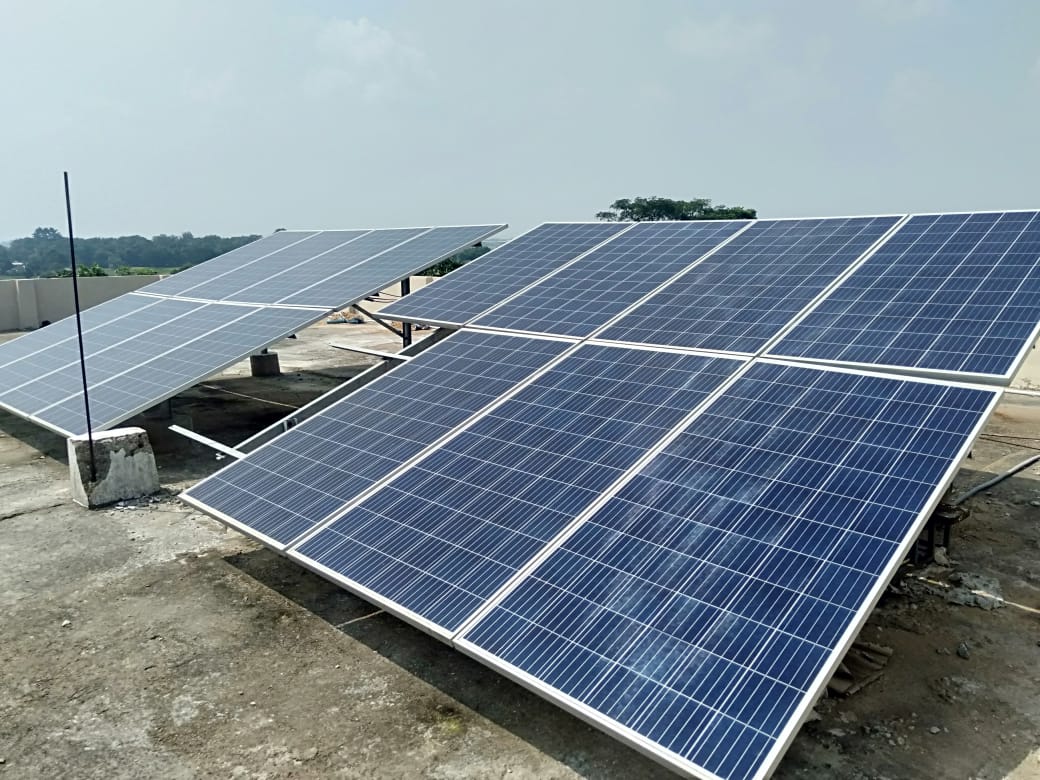Solar PV is powering critical healthcare loads during a pandemic in remote areas of Jharkhand

As India grapples with a stressed healthcare system during the on-going pandemic, Nav Jivan Hospital in Palamu, 120 kms from Jharkhand’ s capital, Ranchi, has emerged as a lesson in a little foresight can go a long way.
Robust medical facilities are few and far between in the remote areas of Jharkhand. Nav Jivan Hospital was established in 1961 in Palamu district to serve such remote communities.
The years before
This hospital has the only Acute Care Unit in the region, and facilities to treat contagious diseases like tuberculosis. For several years, the hospital performed surgeries and child deliveries with flashlights and petromax lamps. While the situation improved when the facility got its electricity connection from the electricity utility, power cuts and voltage fluctuations continued to significantly hamper operations. In addition, inevitable damage to the electricity grid during the monsoons would lead to prolonged periods of power outages, forcing the hospital to depend on expensive, and polluting, diesel generators.
Electricity for rural healthcare
Unsurprisingly, as of late 2019, this 100-bed facility faced erratic electricity supply and regular voltage fluctuations that affected its operations.
In order to fortify its electricity supply, a team of doctors at Nav Jivan invested in solar power in January 2020 and funded its first 10 kilowatt peak (kWp) Solar Photovoltaic (PV) system. Unbeknownst to the team, they were barely a month away from COVID-19. But despite the remoteness of its location, the hospital was crisis-ready.
How solar power helped Nav Jivan respond effectively to a healthcare crisis
The 10 kWp system takes care of some of the most critical needs in the hospital. It functions as the primary source of power for running equipment required to treat COVID-19 patients.
Solar energy powers the ICU ventilators, and can also operate additional ventilators procured from the state government, for emergencies.
Today, this hospital has the only Acute Care Unit in the region, and also facilities to treat contagious diseases like tuberculosis.
In early April, the Government of Jharkhand identified Nav Jivan as one of the main healthcare facilities for COVID-19 cases to cater to 450 villages in the region. Under the state’s guidance, the hospital has set up dedicated beds for suspected and confirmed cases, enhanced its treatment facilities for confirmed cases, and reserved four beds in its intensive care unit (ICU) for critical COVID-19 patients.
The road ahead
Solar power can be a model used to bring better healthcare to rural and remote India. It is an energy alternative for hospitals that can reduce expenditure on and pollution from diesel generators that were otherwise inevitable, improve their financial efficiency, and allow facilities to provide uninterrupted services.
Nav Jivan sets an example in the use of reliable energy, especially in rural hospitals. It has proved that with improved access to reliable electricity, rural hospitals can upgrade basic as well as critical-care services. But its progress and advancement in facilities is not an overnight success but the result of years of judicious planning and forethought.
Proactive steps towards improving its services over the years – and more recently, fortifying its electricity supply with decentralized solar power – has played a significant role in enhancing self-reliance and improving disaster-management capabilities in this rural hospital.
To achieve this, it is important to build national- and state-level dialogue on the need for resilient healthcare delivery systems through integrated policies, sustainable technology solutions and innovative financing models.

